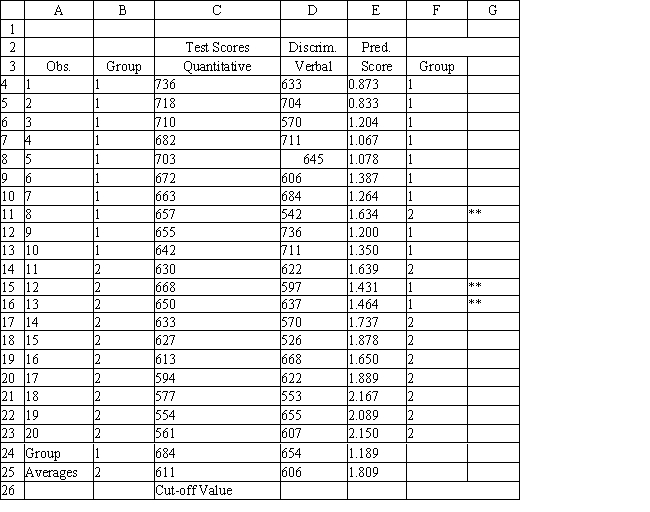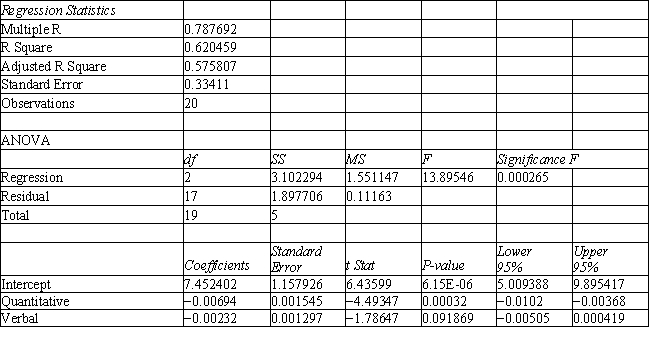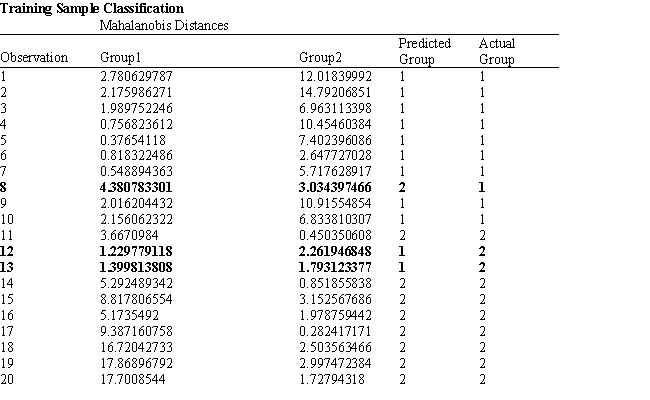Exhibit 10.1
The following questions are based on the problem description and the output below.
A college admissions officer wants to evaluate graduate school applicants based on their GMAT scores, verbal and quantitative. Students are classified as either successful or not-successful in their graduate studies. The officer has data on 20 current students, ten of whom are doing very well (Group 1) and ten who are not (Group 2) . 




-Refer to Exhibit 10.1. What percentage of the observations is classified incorrectly?
Definitions:
Net Income
A company's overall income after deducting all expenses and taxation from gross revenue.
Accumulated Depreciation
The total depreciation amount that has been charged to expense a fixed asset over its useful life to reflect wear and tear, aging, or obsolescence.
Operating Activities
Day-to-day actions and transactions that are central to the primary business operations, including revenue and expense activities.
Indirect Method
A method used in cash flow statements to adjust net income for the changes in non-cash accounts to arrive at operating cash flow.
Q12: Refer to Exhibit 3.3. Which of
Q14: Draw the network representation of this LP
Q28: Refer to Exhibit 11.18. What formulas should
Q40: Refer to Exhibit 7.1. What formula goes
Q42: What is the constraint for node
Q57: Using the information in Exhibit 12.3, what
Q60: Refer to Exhibit 15.6. Modify the table
Q62: Refer to Exhibit 14.1. What formula should
Q76: Refer to Exhibit 11.21. What is the
Q86: A corporation with a net capital gain